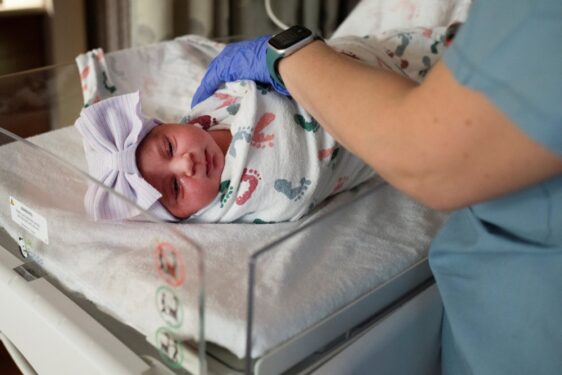
By Kate Scanlon, OSV News
WASHINGTON (OSV News) — The U.S. fertility rate has slowed to a new record low, according to an analysis recently published by the Centers for Disease Control and Prevention. But experts said there does not appear to be any one policy that could reverse a complex trend.
Experts who spoke with OSV News suggested that some policies growing in popularity — like paid parental leave and increasing child care options — might have other merits but aren’t necessarily going to increase fertility rates if implemented.
The report, which examined 2023 birth certificate data, found a 2% decline from 2022, with 3,591,328 births recorded in 2023. It coincides with broader declining fertility rates globally.
The U.S. fertility rate has generally fallen below what experts call replacement level, or the amount of live births necessary for a generation to reproduce itself, since 1971. A society that can’t meet its replacement rate might see adverse economic outcomes as well as a reduced tax base, economists said.
“The trend line is pointing pretty much one direction and that’s down,” Patrick Brown, a fellow at the Ethics and Public Policy Center’s Life and Family Initiative, told OSV News.
Brown said other countries with a similar trend that have implemented policies aimed at reversing the trend — such as Singapore or Sweden — have not had much impact on fertility rates.
“I’m dubious that there’s a lot the policy can do, but that doesn’t mean there’s nothing we can do,” Brown said, pointing to a slight uptick in fertility around the COVID-19 pandemic when more companies adopted policies such as flexible hours or work-from-home capabilities.
“When moms can work from home for example, their fertility rates tick up a little bit,” he said.
But such policies aren’t possible in every industry, Brown said, pointing to the child tax credit as a “very broad-based, egalitarian way of supporting families” that would provide some aid to families across the socioeconomic spectrum.
Brown noted that much of the birth decline in the U.S., according to the data, “specifically is driven by a decrease in births outside of marriage.”
“So fewer babies being born outside of the context of marriage is, you know, in some respects, a good news story,” he said. “But on the other hand, we’re obviously seeing the downstream consequences of lower birth rates across the board but … all that is to say it is complex.”
Brown said that “thinking about marriage in a new way, and really trying to reorient some of our economic structures and decisions to make it easier for people to get married earlier in life” might result in an increase to the fertility rate.
Catherine Ruth Pakaluk, an economist at The Catholic University of America in Washington, said data from across the globe shows direct incentives to have a baby — such as a one-time payment — can result in short-term bumps to the rate, but not necessarily a sustainable increase.
Pakaluk, author of “Hannah’s Children: The Women Quietly Defying the Birth Dearth,” added that global data shows “people who are frequent church attenders have more children,” and fostering healthy churches might be an indirect way of reversing the trend.
Churchgoers, Pakaluk argued, “are receiving both a set of convictions about the value of children and the support needed on the community level … just the nitty-gritty support of everyday life meals after a baby is born and all of those things. They’re receiving all the things you need to form families and have children.”
The data, Pakaluk argued, is a reflection of several decades of women and families balancing “two good things,” children and careers, and often choosing “a mixture of both.”
“We are going to have a hard time confronting this trend without, at some point, addressing the elephant in the room, which is that women are doing both things and it’s pretty hard to do both of those things,” she said.
